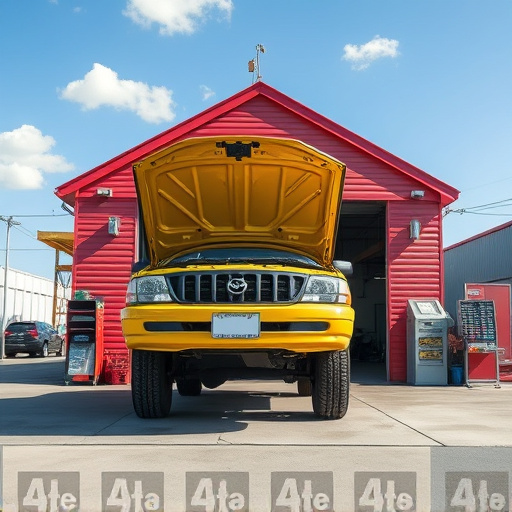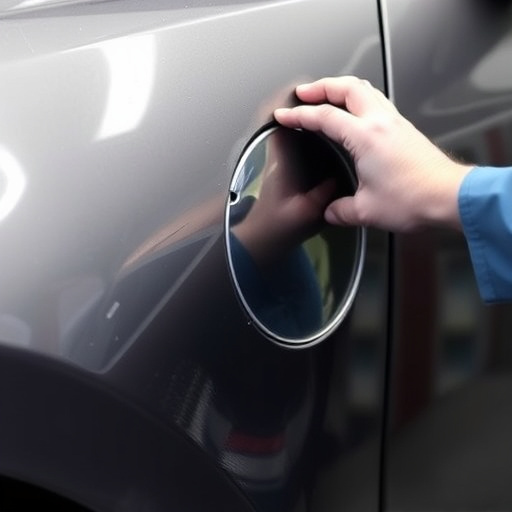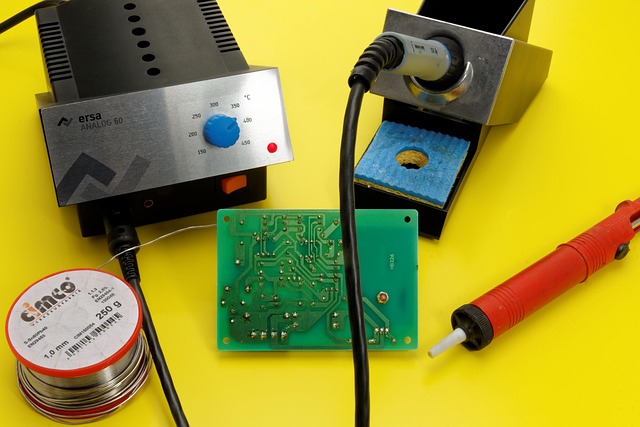Tesla's Thermal Management System, vital for vehicle health, requires specialized care after collision repair. Using tools like the Tesla Toolbox Interface, experts conduct thorough checks, monitoring battery and coolant temperatures, ventilation, and insulation to prevent heat-related issues. Strategic sensor placement and regular scheduling are key during extreme weather, addressing blocked vents, overheating, and deeper bodywork problems indicated by temperature anomalies.
In the realm of electric vehicle (EV) technology, efficient thermal management is paramount for optimal performance and longevity. This article delves into the process of conducting a thorough Tesla thermal management check using the Tesla Toolbox Interface—a powerful tool for EV owners and technicians alike. We’ll explore the intricacies of understanding Tesla’s advanced cooling systems, guide you through utilizing the interface effectively, and provide best practices along with insights on addressing common issues related to Tesla thermal management checks.
- Understanding Tesla's Thermal Management System
- Utilizing the Tesla Toolbox Interface for Checking
- Best Practices and Common Issues to Address
Understanding Tesla's Thermal Management System

Tesla’s Thermal Management System is a sophisticated network designed to maintain optimal temperatures within the electric vehicle’s crucial components. This system plays a vital role in ensuring the longevity and performance of Tesla vehicles, particularly during extreme weather conditions. At the heart of this system lies advanced software that monitors and controls heat generation and dissipation across various systems, including the battery pack, motor, and power electronics.
Understanding thermal management is essential for both car paint repair and automotive collision repair professionals when dealing with Teslas. The vehicle’s unique design, with its high-density battery packs and powerful electric motors, requires specialized care during repairs to avoid temperature-related issues. In a collision center, technicians must be adept at conducting Tesla thermal management checks using tools like the Tesla Toolbox Interface to identify potential heat-related problems and ensure proper cooling systems are in place post-repair, thereby preserving the vehicle’s overall health and safety.
Utilizing the Tesla Toolbox Interface for Checking

The Tesla Toolbox Interface offers a powerful tool for performing thorough Tesla thermal management checks, ensuring optimal performance and longevity of your electric vehicle. This user-friendly interface allows auto repair shops and car body shops to access advanced diagnostics, providing insights into the car’s temperature regulation system. By utilizing this feature, technicians can efficiently identify potential issues within the complex network of components that make up a Tesla’s thermal management system.
Through the interface, you can monitor critical parameters such as battery cell temperatures, coolant levels, and fan operation, among others. This real-time data enables car body repair experts to pinpoint problems like inefficient cooling systems or leaks in the fluid circuits. With these insights, they can make informed decisions, prescribe effective remedies, and guarantee that your Tesla remains in peak condition, just like a well-maintained auto repair shop would for any vehicle.
Best Practices and Common Issues to Address

When conducting a Tesla thermal management check using the Tesla Toolbox Interface, it’s essential to adhere to best practices for accurate and reliable results. Start by ensuring all sensors are properly calibrated and placed in strategic locations across the vehicle’s key components. This includes engine bay areas, battery packs, and critical interior spaces. Regularly scheduled checks, especially during extreme weather conditions, can help identify potential issues early on. Monitoring temperature differentials across various parts of the vehicle is crucial, as unusual spikes or dips could indicate faulty cooling systems, blocked vents, or even internal component degradation.
Common issues to address include poor airflow due to clogged filters or blocked vents, which can lead to overheating. Another frequent problem is inadequate insulation in certain areas, particularly in auto body restoration and paintless dent repair cases, where customization might have compromised the vehicle’s original thermal barrier. Keep an eye out for anomalies in temperature readings, as they could signal issues with the battery cooling system or even point to more serious underlying problems within the vehicle’s bodywork.
The Tesla Toolbox Interface offers a powerful tool for conducting thorough Tesla thermal management checks, ensuring optimal vehicle performance and safety. By understanding the intricate system and employing best practices, users can efficiently navigate the process, identify potential issues, and maintain their electric vehicles’ efficient cooling systems. This comprehensive guide highlights the key aspects of Tesla’s thermal management, empowering owners to keep their cars running smoothly in all conditions.














